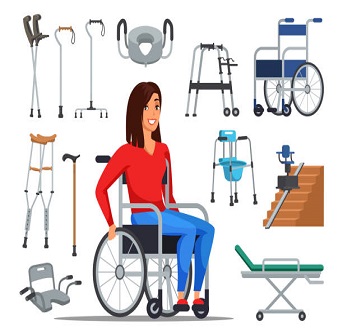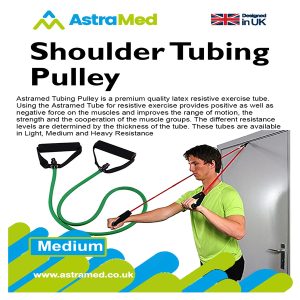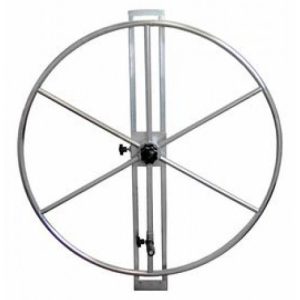- Training Manikins
- Electromedical
- ANESTHESIA MACHINES
- AUTOCLAVE STERILIZER
- Ambu Denmark
- CTG MACHINES
- DEFIBRILLATOR
- DERMATOLOGY
- ECG MACHINES
- EEG / EMG MACHINES
- ELECTRO SURGICAL UNIT
- ENT EQUIPMENT
- HOLTER AND AMBULATORY DEVICESHOLTER AND AMBULATORY DEVICES
- NEONATAL EQUIPMENT
- OPERATION LIGHTS
- OPERATION TABLE
- PATIENT MONITORS
- RESPIRATORY SERIES
- SPIROMETRY
- SUCTION MACHINES
- SYRINGE / INFUSION PUMP
- ULTRASOUND MACHINE
- LARYNGOSCOPES
- P.O.P CUTTERS
- TOURNIQUET
- X-RAY ILLUMINATOR
- MEDICAL BULB
- TEMPERATURE DATALOGGER
- RADIOLOGY
- Hospital Furniture
- Belt & Braces
- Rehabilitations
- ALUMINUM MANUAL WHEEL CHAIR
- CEREBRAL PALSY WHEEL CHAIR
- CHILDREN WHEEL CHAIR
- COMMODE CHAIR
- COMMODE WHEEL CHAIR
- ELECTRIC WHEEL CHAIRS
- PORTABLE TRAVELING WHEEL CHAIR
- ROLLATOR
- SHOWER CHAIR
- STEEL MANUAL WHEEL CHAIRS
- STICKS & QUAD CANE
- TRANSPORT WHEEL CHAIR
- WALKERS ADULT & CHILD
- ELECTRIC COMMODE LIFT
- ELECTRIC PATIENT LIFTER
- ACCESSORIES
- Surgical Instruments
- Physiotherapy
- Laboratory Equipments
- Home Healthcare
- Miscalleneous
- Medical Scrubs
- Show more
Log in / Sign up
Login
Register
- Training Manikins
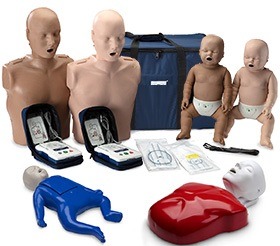
CPR Manikins
- Electromedical
- Hospital Furniture
- Rehabilitation
- Accident And Emergency
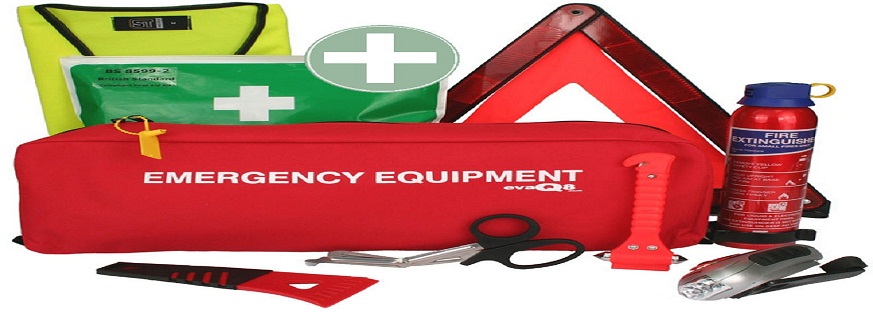
ACCIDENT AND EMERGENCY
- Training Manikins
- Electromedical
- ANESTHESIA MACHINES
- AUTOCLAVE STERILIZER
- Ambu Denmark
- CTG MACHINES
- DEFIBRILLATOR
- DERMATOLOGY
- ECG MACHINES
- EEG / EMG MACHINES
- ELECTRO SURGICAL UNIT
- ENT EQUIPMENT
- HOLTER AND AMBULATORY DEVICESHOLTER AND AMBULATORY DEVICES
- NEONATAL EQUIPMENT
- OPERATION LIGHTS
- OPERATION TABLE
- PATIENT MONITORS
- RESPIRATORY SERIES
- SPIROMETRY
- SUCTION MACHINES
- SYRINGE / INFUSION PUMP
- ULTRASOUND MACHINE
- LARYNGOSCOPES
- P.O.P CUTTERS
- TOURNIQUET
- X-RAY ILLUMINATOR
- MEDICAL BULB
- TEMPERATURE DATALOGGER
- RADIOLOGY
- Hospital Furniture
- Belt & Braces
- Rehabilitations
- ALUMINUM MANUAL WHEEL CHAIR
- CEREBRAL PALSY WHEEL CHAIR
- CHILDREN WHEEL CHAIR
- COMMODE CHAIR
- COMMODE WHEEL CHAIR
- ELECTRIC WHEEL CHAIRS
- PORTABLE TRAVELING WHEEL CHAIR
- ROLLATOR
- SHOWER CHAIR
- STEEL MANUAL WHEEL CHAIRS
- STICKS & QUAD CANE
- TRANSPORT WHEEL CHAIR
- WALKERS ADULT & CHILD
- ELECTRIC COMMODE LIFT
- ELECTRIC PATIENT LIFTER
- ACCESSORIES
- Surgical Instruments
- Physiotherapy
- Laboratory Equipments
- Home Healthcare
- Miscalleneous
- Medical Scrubs
Wishlist
0
Compare
0
SHOULDER WHEEL ...
₨12,500.00Description:
R0121 Shoulder Exerciser Wheel
• Easy to mount on wall
• Adjustable height
• Adjustable strength of cycling
• 90 cm in radius
• Nikel plated, high quality metal body
Product categories
- Accident And Emergency (16)
- First Aid Kits (3)
- First Aid Product (9)
- Laryngeal Mask (4)
- Belt And Braces (98)
- Ankle and Foot Product (24)
- Back (14)
- Collar and Shoulder Product (12)
- Cool Max Fabric Line (12)
- Defender Series Product (5)
- Knee Product (14)
- Wrist Product (17)
- Electromedical (211)
- Ambu Denmark (10)
- Ambu Breathing Bag (1)
- Ambu Face Mask (2)
- Ambu Resuscitator (5)
- Extrication Collar (1)
- Anesthesia Machine (1)
- Autoclave Sterilizer (3)
- Blood Warmer (2)
- CTG Machine (6)
- Defibrillator (3)
- Dermatology (12)
- Digital LED Phototherapy Unit (1)
- E.C.G Machines (14)
- 12 Channel (5)
- 3 Channel (6)
- 6 Channel (2)
- EEG/EMG Machine (6)
- Electrosurgical Unit (2)
- Ent Equipment (27)
- Auroscope (7)
- Binocular Loupes (2)
- Ent Diagnostic Sets (4)
- Head Lights (5)
- Opthalmoscopes (8)
- Eye Vision Chart (1)
- Holter And Ambulatory Devices (2)
- Laryngoscopes (7)
- Manual LED Phototherapy Unit (1)
- Neonatal Equipment (8)
- Baby Incubator (2)
- Infant Radiant Warmer (2)
- Infantometer (1)
- Phototherapy Unit (3)
- Operation Light (17)
- Dual Dome OT light (2)
- Examination Light (4)
- Shadowless OT Light (5)
- Single Dome OT Light (4)
- Stand LED OT Light (3)
- Operation Table (4)
- Orthopedic Drills (4)
- Patient Monitor (14)
- Radiology (9)
- Respiratory Series (32)
- Bipap (4)
- CPAP (2)
- Cpap Mask (3)
- Nebulizer (8)
- Oxygen Concentrator (10)
- Oxygen Cylinder and Accessories (3)
- Portable Oxygen Concentrator (3)
- Steamer (2)
- Spirometry (2)
- Suction Machine (6)
- Syringe/Infusion Pump (5)
- Temperature Data Logger (5)
- Tourniquet (2)
- Ultrasound (2)
- Ultrasound Printer (1)
- Warming System (1)
- X-Ray Illuminator (6)
- Double Viewer (2)
- Four Viewer (1)
- Single Viewer (2)
- Three Viewer (1)
- Ambu Denmark (10)
- Home Health Care (146)
- Aids For daily Living (2)
- Air Humidifier And Washer (10)
- Air Mattress (5)
- Baby Care (5)
- Baby Weight Scale (4)
- Blood Glucose Monitor (1)
- Blood Pressure Monitor (27)
- Aneroid (7)
- Digital (15)
- Mercurail (3)
- Mercurail Stand (2)
- Flexible Heating (10)
- Hearing Amplifier (2)
- Height and Weight Machine (11)
- insulin Carrier (1)
- Massage (24)
- Body Massager (12)
- Foot Massager (5)
- Massage Chair (7)
- Ortho Support (13)
- Sitz bath (1)
- Stethoscope (9)
- Thermo Hygrometer (1)
- Thermometer (6)
- Weight Scale (17)
- Hospital Furniture (100)
- Accessories (7)
- Beds (10)
- Electric Bed (5)
- Full Fowler Manual (2)
- Manual Bed (3)
- Semi Fowler (1)
- Delivery Table (3)
- E.C.G Trolley (1)
- Examination Couch (5)
- Foot Steps (2)
- General Purpose Trolleys (4)
- General Ward Furniture (8)
- I.V Stands (4)
- Instruments Trolley (8)
- Operation Theater Furniture (7)
- Patient Stool (3)
- Pediatric Furniture (3)
- Storage Cabinet (1)
- Stretcher Series (34)
- Aluminum Alloy Folding Stretcher (7)
- Aluminum Alloy Stretcher (6)
- Basket Stretcher (2)
- Luxurious Stretcher (2)
- Scoop Stretcher (2)
- Spine Board (7)
- Stair Stretcher (4)
- Stretcher Trolley (3)
- Traction Splint (1)
- Vaccum Stretcher (1)
- Laboratory Equipment (13)
- Blood Bank Refrigerator (1)
- Centrifuge Machine (7)
- Hot Air Oven (3)
- Microscope (2)
- Medical Scrubs (8)
- Lab Coat Female (1)
- Lab Coat Male (1)
- O.T Dress Female (2)
- O.T Gowns (2)
- O.T Shoes (1)
- OT Dress Male (1)
- Miscellaneous (24)
- Biohazard Bins And Containers (8)
- Couch Roll (2)
- Digital Alcohol Tester (2)
- Shoe Cover Dispenser (3)
- Speech Therapy (4)
- Sterilization Paper (3)
- Vein Finder (2)
- Physiotherapy (50)
- Cervical Traction Kit (1)
- Compression Therapy (3)
- Gym Ball (5)
- Hand Exercise (4)
- Infrared LAMP (3)
- Kinesiology Tap (1)
- Moist Heat Therapy (6)
- Pedal Exerciser (7)
- Short Wave Diathermy (1)
- Shoulder Pulley (2)
- TENS/EMS (6)
- Treadmill (1)
- Treatment Table (1)
- Ultrasonic Therapy (6)
- Wax Bath (1)
- Yoga (2)
- Popular picks (4)
- Rehabilitation (103)
- C.P STAND (1)
- Commode Chair (13)
- Electric Commode Lift (1)
- Electric Patient Lifter (1)
- Electric Wheel Chair (26)
- Adam (8)
- Life Care (2)
- MSR (2)
- Safety Aids (4)
- Sahara iO (10)
- Hydraulic Patient Lift (2)
- Manual Wheel Chair (30)
- Rollator (4)
- Shower Chair (3)
- Sticks & Quad Cane (5)
- Walker Adult & Child (8)
- Wheel chair Accessories (9)
- Surgical Instruments (47)
- ENT Surgery (6)
- General Surgery (9)
- Gyne Surgery (11)
- Hospital Hallow Ware (18)
- Instruments Trays (5)
- Kidney Tray (4)
- Surgical Drum (9)
- Neuro Surgery (2)
- Ortho Surgery (1)
- Training Manikin (184)
- Advance Cardiac Life Support(ACLS) (5)
- Basic Life Support (3)
- Child Birth (23)
- Cpr Training Manikin (7)
- Gynaecology (8)
- Human Anatomy Model (6)
- Human Muscle (7)
- Infant Model (2)
- Joint Model (7)
- Medical Model (58)
- Medical Teaching Model (24)
- Nursing Model (6)
- Pelvis Model (6)
- Skelton (5)
- Skull (4)
- Spine Model (9)
- Torso Model (4)



